Stanley Park and the UBC Museum of Anthropology
Vancouver is very like Seattle, cut up by bodies of water, with lots of bridges connecting everything. The city has been compared to a right hand, pointing west, with a thumb pointing northwest. North of the hand is the Burrard Inlet, separating Vancouver from West and North Vancouver. South of the hand is the North Arm of the Fraser River, separating it from Richmond and the airport. The thumb is downtown, and its tip is Stanley Park.
Below: After a full day of traipsing around downtown, we decided to kick back in the park. The easternmost tip of Stanley Park is Brockton Point. Here there is a stand of First Nations totem poles; the photo shows them, looking south across Burrard Inlet, with downtown Vancouver in the background. In First Nations culture, the carved cedar poles proclaimed clan heraldry. European settlers, characteristically oblivious to the natives' culture, assumed a religious significance, and called them "totem poles".
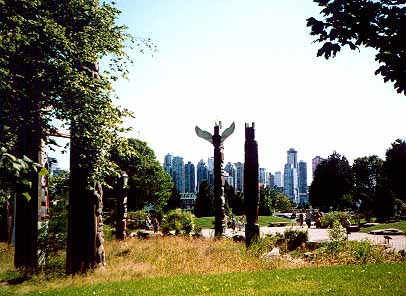
Below: We're still in Brockton Point. Alison is pictured looking out across Coal Harbor ... a piece of Burrard Inlet formed by Stanley Park and downtown. North downtown is seen in the background.
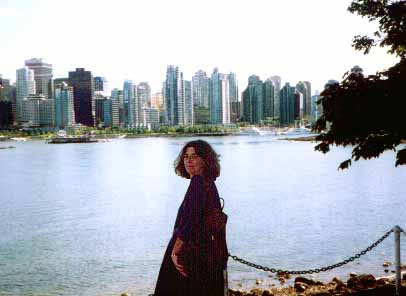
The University of British Columbia is located on a very large expanse of native rainforest on the northwest tip of the city ... in our hand analogy, it would be the tip of the index finger. Located here is the UBC Museum of Anthropology, which probably has the most complete collection of northwest coast First Nations art. The museum is atypical; its entire collection is open to the public. What is not on display can be seen in a large room full of cabinets, with the collection in drawers. In 1991, we spent nearly an entire day rummaging through this, and running over to the master catalog for all the info on whatever interested us. This collection is still publicly accessible, but other things have changed. The parking lot is now metered, and it cost us f**king $6 CN for the max 2 hours. The rear courtyard, overlooking English Bay and the Strait of Georgia, formerly only had a few totem poles. Now it has houses and structures emulating an actual settlement.
Below left: Alison stands at the portals to the courtyard. Below right: John auditions as a totem pole scary critter.
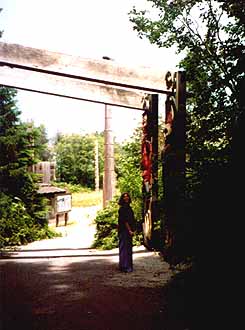
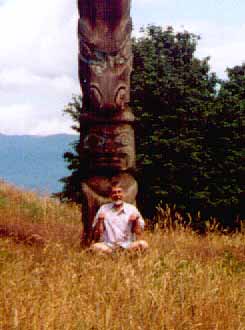
Below: contemporary Haida artist Bill Reed's The Raven and the First Men. Reed, along with other artists, carved this from a huge block of laminated yellow cedar. It depicts the Haida creation tale, where Raven finds a large clamshell, and liberates the First Humans within.
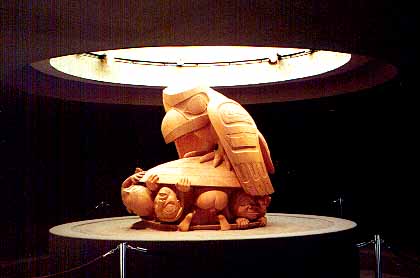
Since John has been a young lad, he has been fascinated by Northwest Coast, Southwest, and Celtic art and ornament. They are all highly structured, yet based in complex curves and spirals ... and all are extremely powerful expressions. Fortunately, there are several really good contemporary First Nations artists carrying on the tradition, but morphing it into the 21st century.